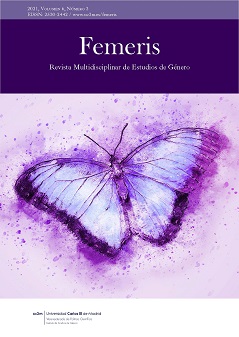Penelope. The tricker weaver
Abstract
In ancient Greece the word belonged to the male. Women lived relegated in the background and their greatest qualities were modesty, fidelity, silent, and industriousness. It is precisely in this field of work where the Greek imaginary, embodied in the myth, grants a voice to women through the object and activity that best identifies them: the loom and the fabric.
The loom is the instrument that governs the feminine world. Already, from the earliest childhood, girls are educated in the management and mastery of weave; an art that will become a metaphor for full sexual union that will result in legitimate children, but will also become the means of communication for women. Many are the examples of females that manage to make themselves seen and heard through the design of their fabrics - Filomela, Quelidon, Helen, Arachne, etc. - ; however, the greatest reference in this field is presented to us in Homeric´s lyric: Penelope.
Like other females, Penelope can only pronounce by working on the loom. However, unlike the others, Odysseus’ wife has been blessed with the gift of metis: intelligence or cunning that allows him to deceive suitors by maneuvering to weave and to unpick Laertes’ funeral mantle.
In this context, weaving would translate as saying – the promise of the choice of a suitor –, while unpicking would be interpreted as not to say – a demonstration of fidelity to her husband and an act of protection, both from the memory of the hero and of his wealth.
Downloads
FEMERIS es una revista del Instituto de Estudios de Género pertenenciente a la Universidad Carlos III.
Los textos publicados en esta revista están –si no se indica lo contrario– bajo una licencia Reconocimiento-Sin obras derivadas 3.0 España de Creative Commons. Permite Atribución-NoComercial-SinDerivadas 3.0 España.
La licencia completa se puede consultar en:http://creativecommons.org/licenses/by-nd/3.0/es/deed.es
Funding data
-
Ministerio de Ciencia e Innovación
Grant numbers PID2019-106782GB-I00




